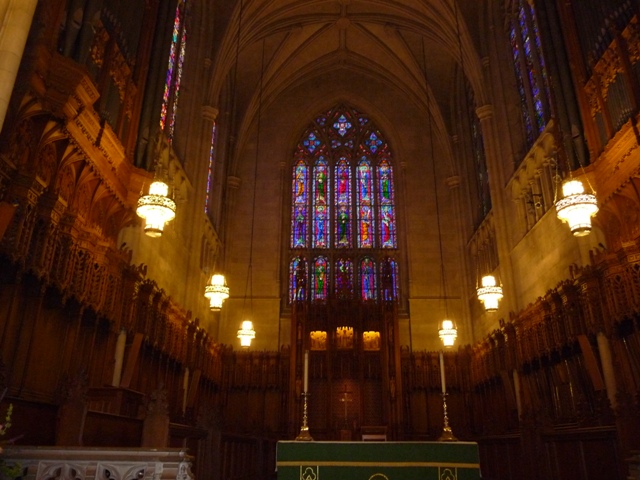By Mi-Ling Stone Poole –
When traveling or visiting friends and family, I like to tour buildings and view architectural landmarks that I can incorporate into my columns.
Recently, I have been spending a lot of time in North Carolina and I wanted to share a special building that is celebrating 75 years of serving the student body and the Durham community.
On the campuses of Duke University you’ll find an architecturally diverse array of structures, from Georgian, Modern to Gothic Revival. But one building that stands out and rises above the rest is the Duke Chapel.
Located on West campus, this sanctuary is an exquisite example of neo -Gothic architecture in the English style, characterized by ribbed vaults, large stone piers, flying buttresses, expansive ceilings with minimal columns and grand pointed arches.
The Chapel was built by James B. Duke who made his fortune in tobacco and electric energy. He hired the Philadelphia firm of Horace Trumbauer to build this Gothic structure which was completed in 1935 to serve the student population and the community of Durham.
Duke archives reveal that Trumbauer’s Chief architect, Julian Abele, thought to be America’s first premiere African American architect, designed the chapel and the original architectural drawings for the Duke campuses.
Abele was the first African American architect to graduate from the University of Pennsylvania; he also trained in Paris. Among his other notable designs were Harvard’s Widener Library, the Philadelphia Museum of Art, and mansions for James B. Duke and other wealthy clients.
The cost of the construction in 1935 was nearly 3 million. The materials used to build the exterior of the chapel included volcanic stones, known as blue stone from a Hillsborough quarry and limestone from Indiana. The interior features Guastavino tile. Reportedly, many of the stone masons and other workers were Italian immigrants.
Highlights of this grand structure include a 210- foot- high bell tower, a memorial chapel, a crypt and three pipe organs. The main chapel seats 1500.
The grand scale of the chapel, the location and the incorporation of stone and wood carvings, sculptures, and a breath taking rib-vaulted ceiling and beautiful stained glass windows, make it a favorite for weddings and a must- see when traveling through Durham.
For more information about the Duke Chapel go to www.chapel.eduke.edu
Share your favorite architectural landmark?







No Comment